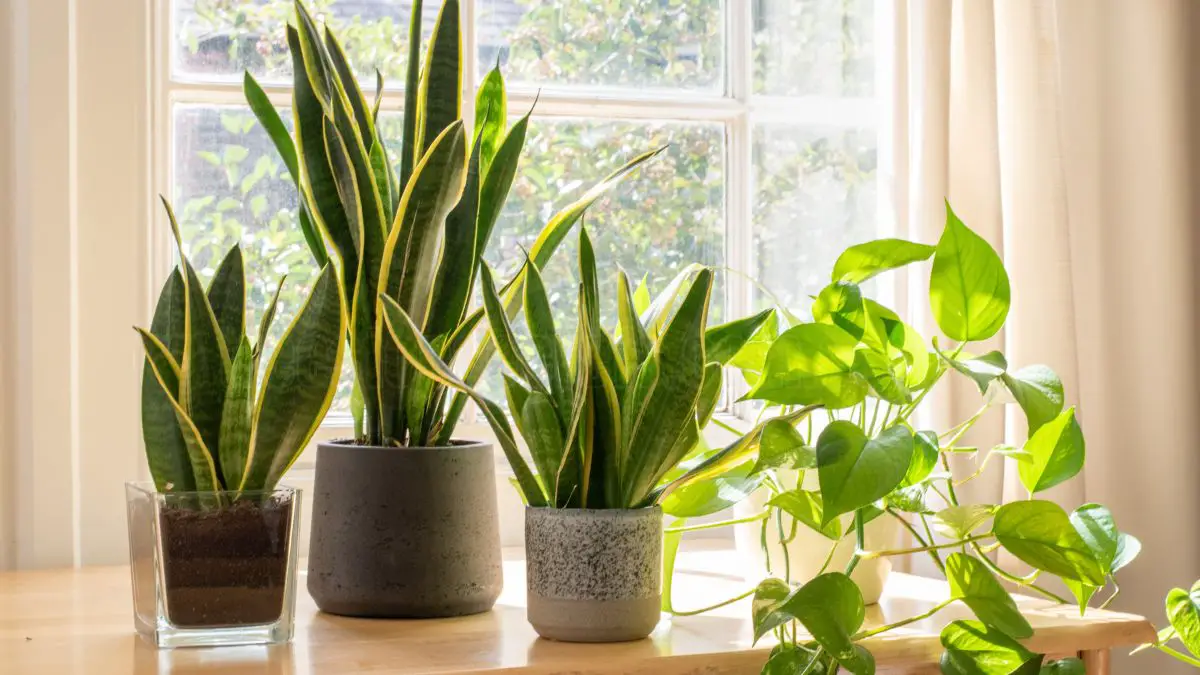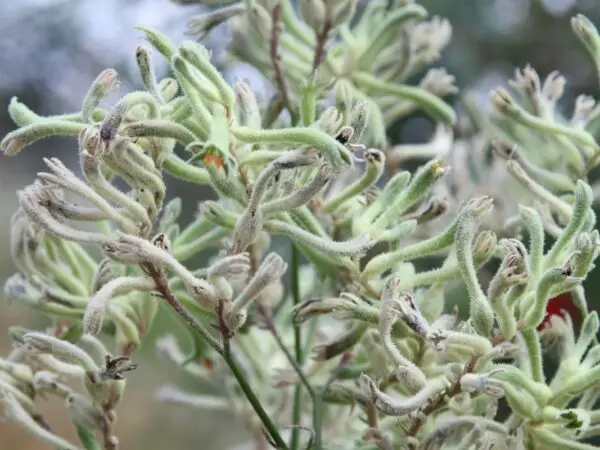With simple care requirements, snake plants are a great option for novice plant parents as well as seasoned growers. The snake plant is renowned for its toughness. It excels in low light conditions and requires minimal watering, which is ideal for modern on-the-go lifestyles.
This guide will cover essential tips on watering, light preferences, and soil requirements to help your snake plant flourish in any home or office setting. We’ll walk through common pests and diseases, so you can be prepared to handle whatever comes your way.
Providing the proper care will ensure your snake plant grows beautifully, making your home or office a stunning oasis. It will provide you with better air quality and a much better environment.
Key Takeaways
- Native to West Africa, snake plants are one of the toughest plants around and make great houseplants. They are perfect for beginners since they are low-maintenance and extremely drought-tolerant.
- They are known for purifying the air by removing toxins. They are perfect for low-light rooms, adding a more contemporary feel while improving function.
- Water once every 2 weeks in the summer months. During the winter, water only every 3-4 weeks and allow the soil to dry out completely before watering again to avoid root rot.
- Choose high-quality, well-draining soil mixes made for succulents and cacti, and mix in perlite or coarse sand for extra drainage if needed.
- Repot every 3 to 4 years, or when you can see roots coming through. Pick a pot no more than 2 inches wide in diameter than the last one to avoid overpotting.
- Be sure to check your snake plants often for pests and diseases. Develop a habit of observing your plants and let them inform you when something is off.
Understanding Snake Plants
Snake plants, or Dracaena trifasciata, are native to the dry climates of West Africa. Their resilience and adaptability enhance their appeal as a perfect plant for beginner plant enthusiasts. With low-maintenance snake plant care, these stunning succulents are an excellent choice for novice gardeners and those with hectic lifestyles.
What is a Snake Plant?
In fact, snake plants, also known as sansevieria plants, have tall, stiff, spiky leaves that can grow to be multiple feet tall. These beautiful plants usually feature variegated leaves, showcasing patterned stripes of color that differ between species. This diversity is reflected in the common name 'mother-in-law’s tongue,' likely inspired by the leaves’ sharp, pointy quality.
Benefits of Snake Plants
These tough guys boast quite a few perks, but first and most important are their air-cleaning powers. Snake plants are known for their ability to filter toxins such as formaldehyde from the air, and during the process, they release oxygen, improving overall air quality.
Their appreciation for low light conditions makes them the ideal plant for various environments. Place them in low light cubicles or set a mood in your bedroom!
Apart from their unique look, snake plants provide several benefits.
Popular Varieties for Indoor Spaces
Popular varieties include Sansevieria cylindrica, known for its impressive round leaves. With its unusual shape, the whale fin snake plant is certainly a conversation starter and as easy-care as they come.
The tiger snake plant, known for its unique markings, is another eye-catching stunner.
Soil and Water
Snake plants, a perfect plant for beginners, thrive in well-draining soil and require light watering, ensuring the soil dries completely between waterings. To maintain healthy snake plant leaves, regularly check soil moisture to avoid an underwatered snake plant.
Optimal Care for Snake Plants
Snake plants, a popular choice among beginner plant enthusiasts, have unique care requirements regarding light, water, and soil. Following these essential snake plant care tips will ensure your plants thrive and maintain their vibrant foliage.
1. Ideal Light Conditions for Indoor Environments
While snake plants enjoy basking in full sun, they will survive in partial shade. They do best in bright, indirect light, where they’ll grow at their fastest rate.
If you live in hotter climates, watch out for leaf scorching and try to keep them a bit out of the direct sunlight.
2. Watering Frequency and Seasonal Adjustments
- Water every 2 weeks in summer.
- Water every 3-4 weeks in winter.
- To prevent root rot, always check the soil moisture before watering.
Let the soil dry out completely between waterings for your snake plant care. In winter, modify your watering routine to ensure healthy snake plant leaves remain firm and prevent damage from drafty windows.
3. Best Soil Mixes for Healthy Growth
Depend on good soil mixes for optimal development. Revert to well-draining potting mediums developed for succulents.
Do not use unamended potting soil to prevent root rot. If you do decide to use regular potting soil, mix in perlite or sand to the soil for extra drainage.
4. Temperature and Humidity Requirements
Ideal temperature for snake plants is between 65°F and 90°F (18°C and 32°C). Avoid exposure to temperatures below 55°F (13°C).
They do well in low humidity conditions, so they’re a good choice for dry indoor environments.
5. Fertilizing Techniques for Optimal Health
Fertilizing is not a requirement, but if you decide to fertilize, pick a fertilizer specifically made for succulents.
For best results, apply during the plant’s active growing season.
Potting and Repotting Guidelines
Basics of Potting Snake plants need proper potting techniques to thrive. These hardy beauties do best in porous, free-draining soil. They flourish best when they are contained in pots that allow for their specific growing tendencies.
Repotting every 3-4 years or when roots are noticeably visible above the soil surface is important. This practice promotes healthy, ideal growing conditions and avoids root-bound situations.
Choosing the Right Pot Size and Type
Choosing the best pot size and material is key. Clay pots are commonly touted as the best option because they’re breathable and will help regulate moisture levels. Ensure pots have adequate drainage holes.
This helps prevent your plant from sitting in water and developing root rot. Pick a pot that is appropriate for your plant’s size. In a perfect world, increase the diameter by 1 to 2 inches to allow for growth in the coming years.
Recommended Steps for Repotting
To repot a snake plant, follow these steps:
- Remove the plant from its current pot.
- Check the roots to see if they’re damaged or rotted.
- Place fresh soil into the new pot.
- Place the plant back in the pot, so it will be at the same depth as it was previously.
A little gentle root loosening can help encourage healthier growth after repotting. The new pot should be no more than 2 inches in diameter larger.
Timing Considerations for Repotting
Timing is important for successful repotting. Spring is the ideal time for vigorous growth. Don’t choose winter months so you don’t risk adding stress to your plant.
Look for signs of stagnation, like little to no vertical growth over time or a lack of new foliage, as these can be signs it’s time to repot.
Propagation Techniques for Snake Plants
Whether you’re a new plant parent or an experienced enthusiast, propagating snake plants is simple and enjoyable! These beautiful plants are perfect for beginners starting their snake plant care journey. Each method produces varying outcomes, allowing for trial and error and individual preferences when growing these hardy houseplants.
1. Leaf Cutting Method in Soil
- Cut a healthy leaf from the plant.
- Leaving the cut end out for a few days to callous is ideal.
- Plant the leaf in a well-draining soil mix.
- Water lightly to avoid over-saturation.
Whether you’re using soil or water to propagate, proper conditions are paramount to getting the cutest turtle plant to root. A combination of potting soil and perlite or sand aids in aeration and drainage, keeping your cuttings from rotting.
Place the pot in an area with indirect light to promote root growth without putting too much pressure on the cutting.
2. Leaf Cutting Method in Water
- Cut a leaf from the mother plant.
- Place the cut end in a container of water.
- Change the water regularly to maintain cleanliness.
Roots will start to form underwater, getting the cutting ready for an eventual move to soil, which is essential for snake plant care. A transparent container works best, since this lets you see your roots developing.
3. Division Technique for Propagation
Dividing snake plants for propagation requires removing the entire root ball and breaking it into smaller sections. To be sure that each division will grow, make sure that each has roots and leaves.
Ideally, you should repot these divisions right after separating them to reduce the stress placed on the plant.
Troubleshooting Common Issues
Though snake plants are generally very hardy, they sometimes run into issues that need to be addressed. Recognizing signs of an underwatered snake plant or other problems early on can significantly improve their long-term success and survival. Regularly monitoring the vibrant foliage and health of these beginner plants is key to identifying potential problems and providing timely intervention.
Identifying and Managing Pests
Common pests such as spider mites and mealybugs can attack snake plants. Because these pests like to mask under the undersides of leaves, consistent checking is important.
Insecticidal soap or neem oil can be used to successfully control these pests, offering a safe, natural method to pest control.
Recognizing Diseases Affecting Snake Plants
Root rot is one of the most common issues, usually first seen by yellowing leaves and a rotten smell. To avoid this, appropriate watering habits are key, like making sure the pot has a drainage hole.
If root rot has set in, cut away damaged leaves and water less frequently to encourage healing.
Signs of Overwatering and Underwatering
Underwatering may cause leaves to become thinner and droop, while overwatering usually shows up as yellowing leaves and a mushy feeling. Prompt action is crucial: for underwatered plants, increase watering gradually.
For overwatered ones, allow the soil to dry out before reintroducing water.
Common Mistakes to Avoid
Common errors such as overwatering and using low-quality soil can stall your plants’ progress. You should get your snake plant used to direct sun slowly.
Failing to adapt to their unique requirements can cause anxiety and deterioration.
Enhancing Growth and Blooms
To grow a happy snake plant, employ smart methods to promote robust growth and flowering. If those conditions are met, then hope for glorious blooming to boot!
Daily maintenance practices, like pruning and cleaning, help contribute to a plant’s long-term health and success. These practices help improve plant appearance. They increase the odds of having blooms too, which although uncommon, can be a treat to behold.
Pruning Techniques for Healthy Growth
Proper pruning is one of the most important ways to keep a snake plant healthy. Here are some tips:
- Remove dead leaves to prevent disease.
- Trim damaged tips to encourage new growth.
- Shape the plant to maintain its aesthetic appeal.
Infection is a foremost concern of any pruning cut. Using clean, sharp tools goes a long way in minimizing infection.
In general, you want to avoid pruning outside of the growing season since you want to give the plant ample time to heal.
Encouraging Flowering in Snake Plants
Age and environment play key roles in snake plant flowering. Specific conditions like enough light and nutritional content can encourage blooming.
Snake plants rarely bloom, giving them the best care possible will often yield surprising surprises.
Overwintering Tips for Cold Months
During the winter months, change care practices to ensure your snake plant thrives despite the cold.
Try to water less often so you aren’t overwatering your plants, which can cause root rot.
To avoid cold injury, make sure that the plant is kept in the warmest part of your home.
Light monitoring light levels is key as well—if your plant isn’t getting enough sunlight, you may need to move them closer to a window.
Conclusion
With their low maintenance needs and striking appearance, snake plants make excellent additions to any home. These tough plants do well with a hands-off approach which suits hectic lifestyles. Monitor soil moisture often and water accordingly, taking into consideration that your snake plant will need less in the winter months. Provide the proper potting mix and adequate light, and these plants will thrive. When things start going awry, be able to promptly recognize what the problem is and implement appropriate remedies.
With just a little care, your snake plants will thrive and reward you with flowers. Implement these suggestions right away, and reap the rewards of healthy, happy houseplants. If you have any questions about this guide or want to share your experiences, please contact us. Good luck with your plant growing!
Frequently Asked Questions
How often should I water my snake plant?
How often should I water my snake plant? To maintain healthy snake plant leaves, let the soil dry out completely before watering again. One of the biggest dangers to snake plants is overwatering, which can lead to root rot.
What light conditions are best for snake plants?
Snake plants, a popular choice among beginner plant enthusiasts, thrive in indirect light but can also tolerate low light conditions without burning their beautiful leaves.
When should I repot my snake plant?
Repotting your snake plant in spring is ideal since it’s the season when many species of snake plants begin actively growing.
Can I propagate my snake plant in water?
So, can you propagate your snake plant in water? Simply cut a healthy leaf from your new snake plant, place it in water, and let roots form over the course of a few weeks.
What pests should I watch for on snake plants?
The most common snake plant pests to watch for are spider mites and mealybugs, which can harm healthy snake plant leaves. Look for webbing or white, cottony clusters on leaves, and treat any infestation right away.
How can I enhance blooming in my snake plant?
To promote blooming in your snake plant, consider using snake plant care tips that emphasize proper watering and light conditions.
Is the snake plant toxic to pets?
Yes, snake plants, a popular house plant among plant enthusiasts, are mildly toxic to pets, especially cats and dogs. To ensure a healthy snake plant and protect your animals, store them safely away.
Image Source: Paid image from CANVA




